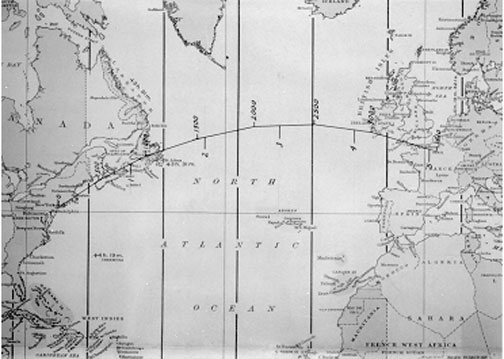gahorn wrote:If you were completely out of sight of land(marks).... wouldn't that be called "dead reckoning" rather than "pilotage"?jrenwick wrote:. Hey, this pilotage stuff really works! ...
No.
Now listen up, all you folks who want to use the term "dead reckoning": According to American Practical Navigator, 1984 edition (because I haven't really kept up to date), page 59:
Now, this is from ocean navigation. When I first learned to fly, our navigation technique was called pilotage (never dead reckoning), because there is an important difference. At sea (i.e. out of sight of land), before there were any electronic aids like LORAN or GPS, the only way you could get a fix on your position was by celestial observations, which could only be done during twilight with sufficiently clear skies to catch a good glimpse of a star or three, perhaps augmented by the sun or moon. In between those times, the navigator would estimate a ship's position by advancing the most recent fix on the chart, based on the ship's heading and speed, corrected for drifts due to wind and current.Dead reckoning is the determination of position by advancing a known position for courses and distances. A position so determined is called a dead reckoning position. It is generally accepted that the course steered and the speed through the water should be used, but the expression is also used to refer to the determination of position by use of the course and speed expected to be made good over the ground, thus making an estimated allowance for disturbing elements such as current and wind. A position so determined is better called an estimated position. The expression "dead reckoning" probably originated from use of the Dutchman's log, a buoyant object thrown overboard to determine the speed of the vessel relative to the object, which was assumed to be dead in the water. Appparently, the expression deduced reckoning was used when allowance was made for current and wind. It was often shortened to ded reckoning and the similarity of this expression to dead reckoning was undoubtedly the source of the confusion that is still associated with these expressions.
This is not what we do in our itty-bitty airplanes that don't cross oceans. What we do is pilotage, which is to calculate a heading to fly that we think will get us from A to B, and calculate the time it will take to do that, based on forecast winds aloft. Along the way, we get fixes as they become available by reference to objects on the ground, and use those to correct our pilotage. When eventually we arrive at where we expected to be, that's a fix. And a big sigh of relief, if Lihue was what you were aiming for.
If I had estimated my position at any point during the passage, that would have been dead reckoning. But we don't do that on short flights -- we wait for a fix, then correct the heading we think will get us to the destination. That's pilotage. It's a subtle distinction, really two sides of the same coin. But it's an important difference -- at least to navigation nerds like me!
Speaking of coins, sometimes you put in a nickel and get a lot back -- right George?
